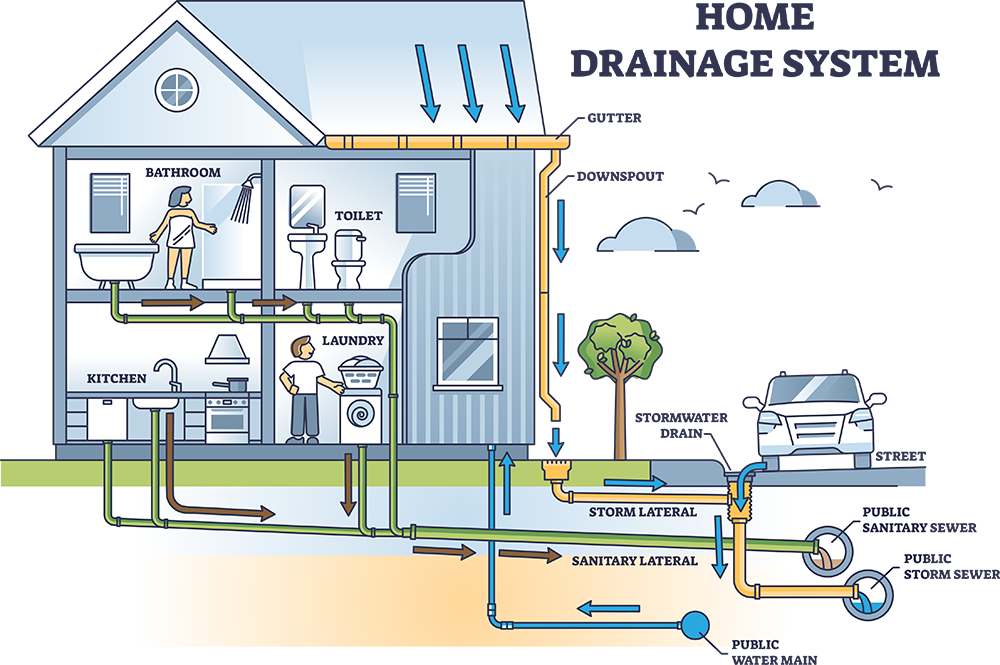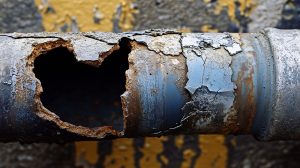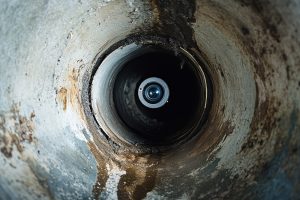The Parts of a the Home Drainage System:
The primary components of your home’s plumbing drainage system include:
- Drains: These are the parts you interact with most. Every fixture—from your toilet and shower to your kitchen sink and dishwasher—has a drain to channel water away from your home. Keeping your drains clog-free is crucial to prevent slow drainage and backups.
- Traps: Every drain has a trap, a curved section of pipe that holds water to prevent sewer gases from rising into your home. Check under your sink or behind your toilets, and you’ll see that characteristic P-shaped bend in the pipe. These are often the first places where clogs form, so knowing their locations and that you can remove them is helpful when clearing minor blockages.
- Plumbing vents: Vents ensure that water flows smoothly through your pipes by allowing air to enter the drainage system. If the vents become blocked by bird nests or snow, you might notice your drains gurgling or water flowing more slowly than it should as a vacuum forms in the drainpipe. These are signs of vent trouble that you should address right away.
- Main sewer line: The final component of your home’s drainage system carries all wastewater to the sewer or septic tank. Problems here can affect your entire home, making it a critical area of focus for maintenance and repair. A video inspection is highly recommended for new home buyers.
Common System Issues
Because of the high demands placed on residential drainage systems, it’s common to run into problems. Here are some issues to watch out for:
- Clogged drains: From hair in the shower drain to grease in the kitchen sink, clogs are a common nuisance that can often be resolved with a plunger or plumber’s snake. Regular preventative drain cleaning helps prevent these blockages.
- Sewer line leak: A leak in the main sewer line can damage your property and pose serious health risks. Look out for unusually lush patches of grass, standing water in your yard, or unpleasant odors as early warning signs.
- Collapsed sewer pipes: Sewer lines don’t just leak—sometimes, they completely collapse. Older homes with aging infrastructure are particularly susceptible to this issue. Signs include frequent backups and sluggish toilet flushing.
- Tree root intrusion: Trees searching for moisture and nutrients may find their way into your sewer line, causing blockages or damage. This problem is tricky to diagnose without a professional sewer camera inspection, as the symptoms often mimic other issues.
- Multiple slow drains: If multiple fixtures start draining slowly, it might indicate a developing sewer line clog or venting problem. Address this early to prevent more significant backups.
- Foul odors: Persistent smells from your drains could signal decaying organic matter, a dry trap, or a venting issue. It’s a potentially easy fix but requires you to correctly identify the source of the smell.




